Spotted
Dykes: granitic matrix including
hornblende phenocrysts with numerous quartz inclusions, and diorite
clasts (sample Tng Shyok).
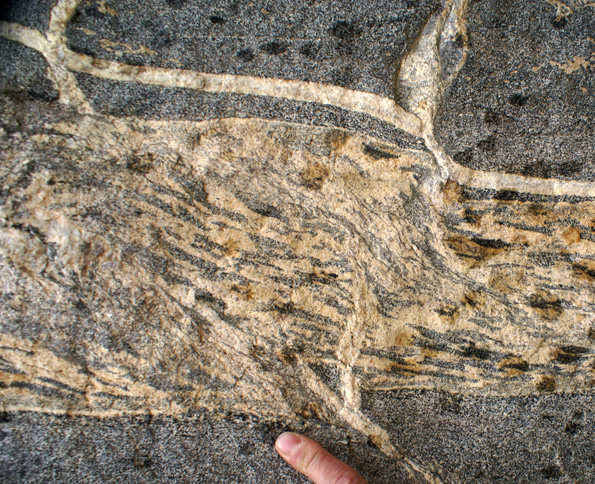
Figure 1a-c.
|
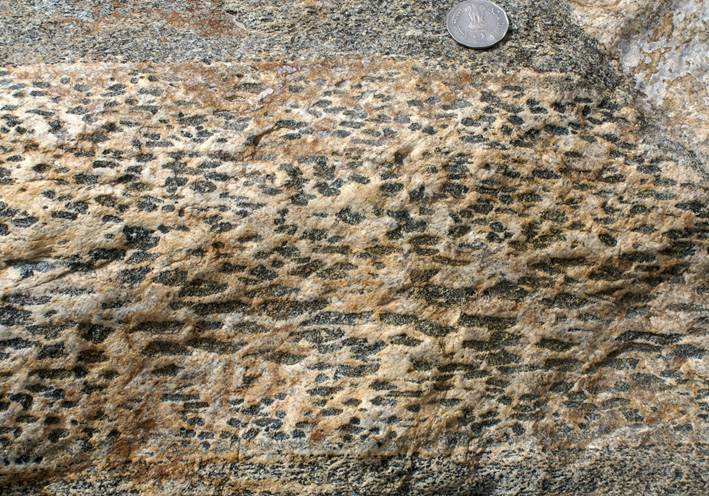
|
Explanation: mixing of intrusive pegmatites with partially molten
amphibolite.
Index photograph
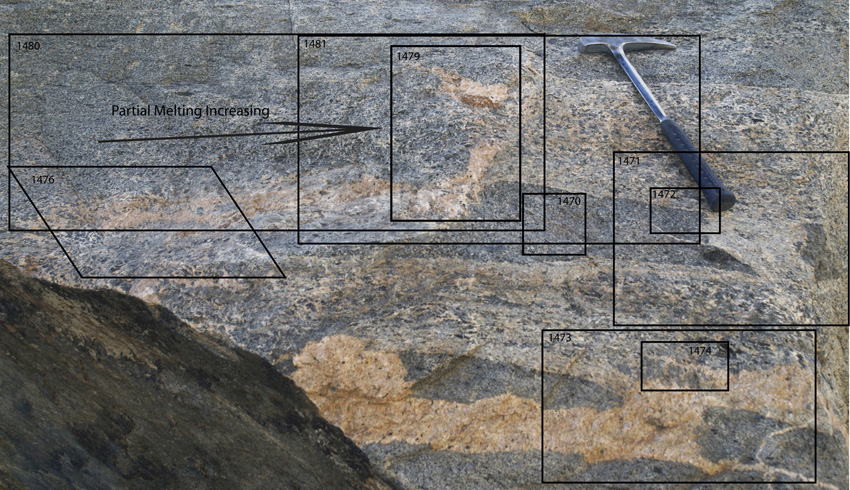
Figure Index |
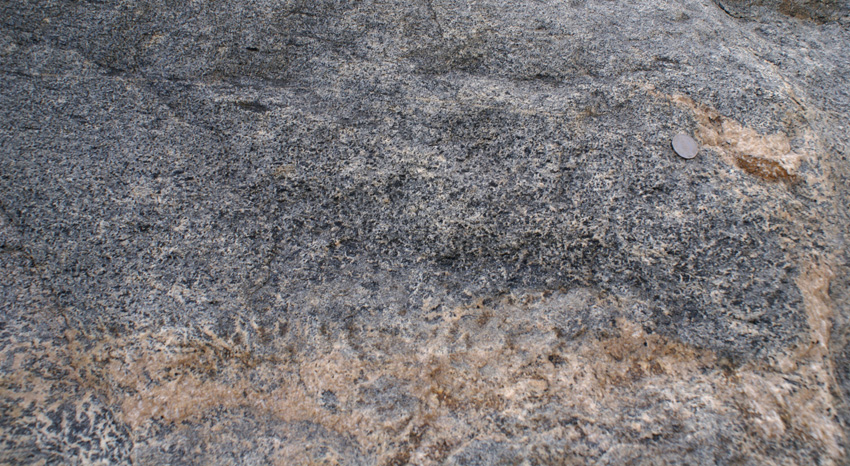
Figure 1480. Homogeneous medium grained diorite on the
left becoming increasingly spotted due to larger hornblende in the core
of leucocratic pockets (just below the coin). Notice also that the
boundary of the orange coloured biotite-bearing pegmatite is diffuse
against the diorite.. This pattern is interpreted to indicate
increasing melt fraction to the right, and a mixing boundary between
the pegamtite and the presumably molten leucocratic groundmass of the
diorite, see photos 1481 and 1479 for details. |
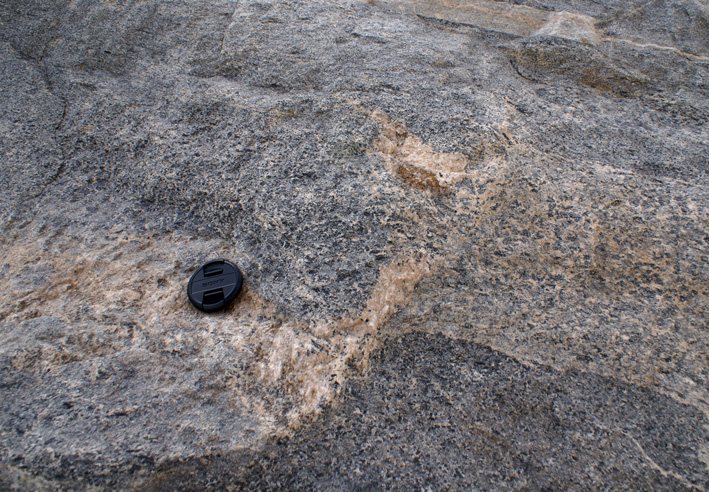
Figure 1481 above. Detail of 1480.
Fig. 1479 right. Pegmatite intrusion broken up by coarse spotted
diorite with
hornblende phenocrysts and leucocratic patches, intepreted to represent
melting. See 1470 below for detail of diorite fabric. |
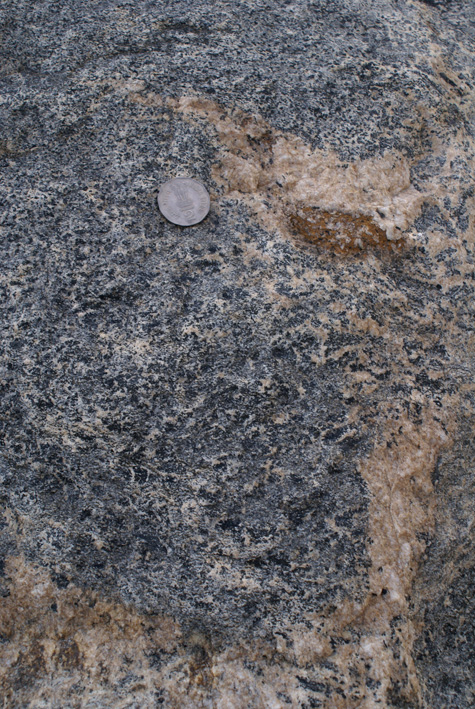
Figure 1b. |
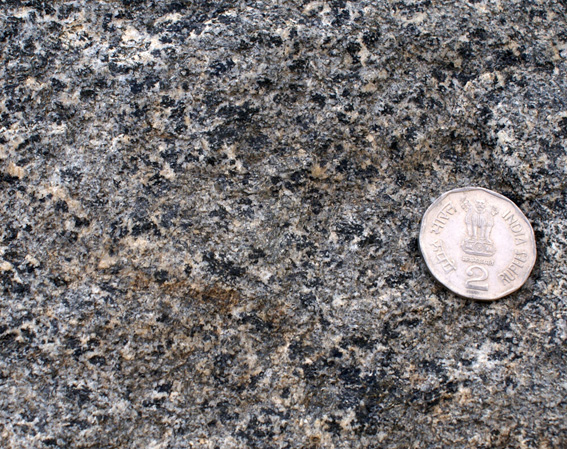
Figure 1470. Incipient formation of spotted diorite due to growth of
hornblende phenocrysts and leucocratic
patches. |
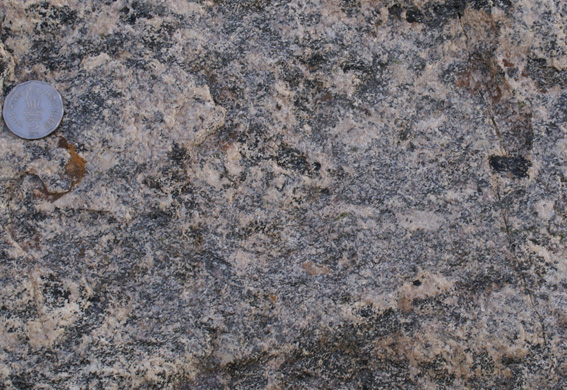
Figure 1486. Better developed in situ melting fabric from another
block.
Notice small quartz inclusions in phenocrysts. |
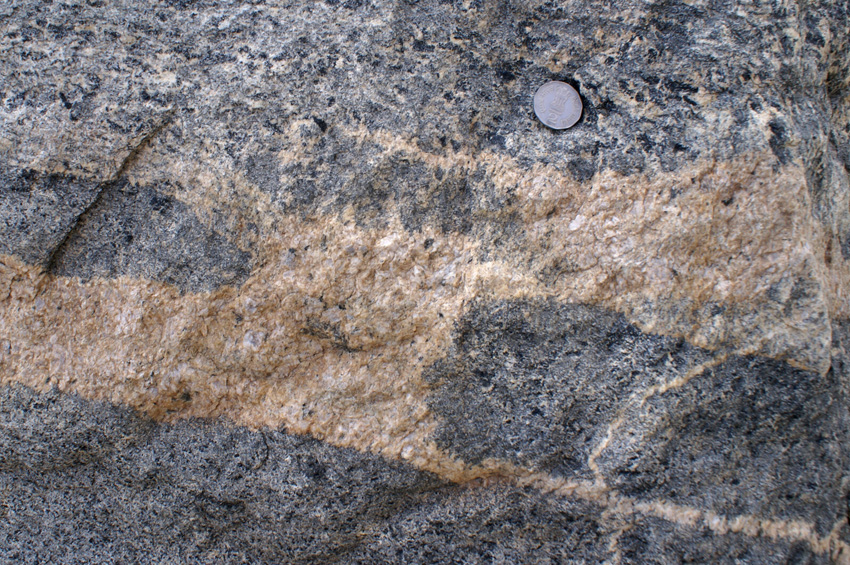
Figure 1473. Pegmatite dyke with irregular, interpenetrating contacts
against the spotted diorite in the upper part of the photograph, but
sharp boundaries against the regular, more homeogeneous dioirite. |
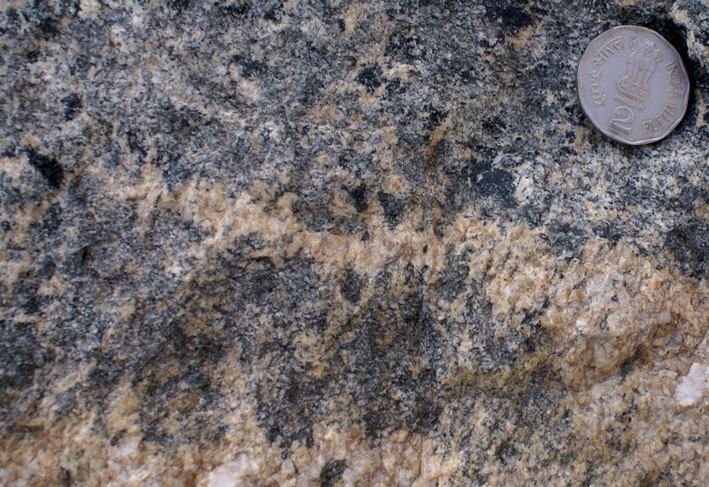
Figure 1474 Detail of pegmatite dykelet into spotted diorite of 1473.
Notice intepenetrating boundary and hornblende phenocrysts at the
boundary. |
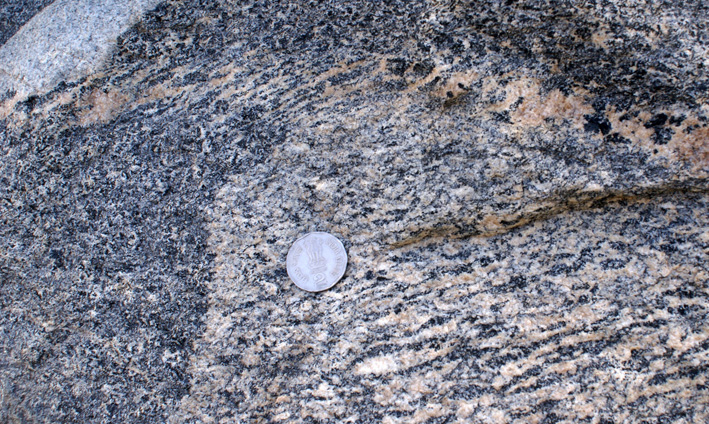
Figure 1488. Pegmatite dyke (horizontal, top of image) evolving from
right to left from an orange
pegmatite without mafic minerals, to a groups of 0.5 cm long hornblende
grains,
to disagreggating the diorite on the left and isolating lens shaped
clasts of diorite along pre-existing weakness planes in the matrix of
the diorite (could it be along leucocratic melt patches?). Note to the
lower right a patchy diorite with an abrupt contact with a homogeneous
diorite. The patchy diorite could be a result of in situ melting. |
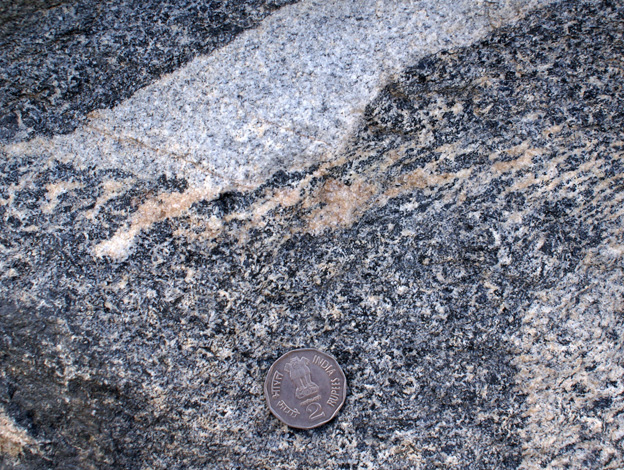
Figure 1491 Detail 1488. |
